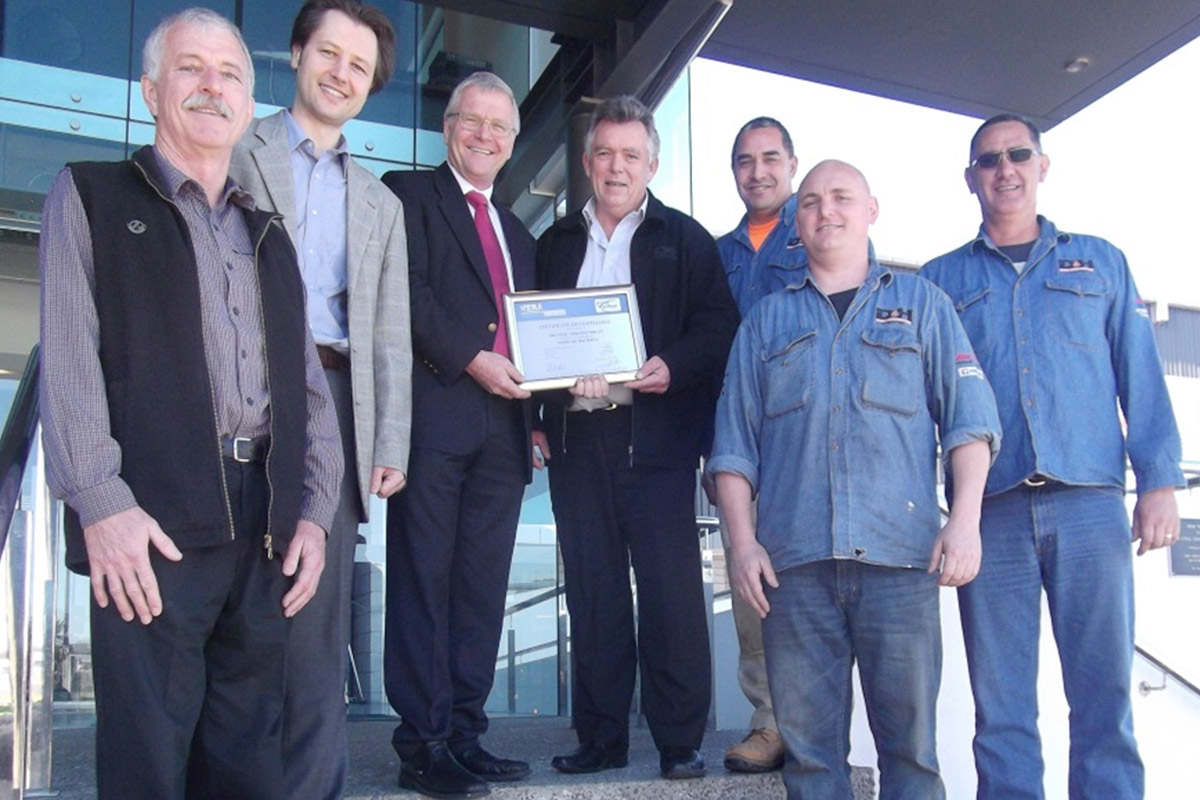For structural steel products to be free from serious problems in production and in service, it is necessary to provide a suitable level of quality management from the design phase, through material selection, into fabrication, and subsequently inspection.
Requirements for welding/fabrication activities are given in the Code of Practice of the NZ Steel Fabricator Certification (SFC) scheme. The Scheme is based on AS/NZS ISO 3834 part 1 to 5, and ISO 3834 part 6, alongside AS/NZS 1554 and NZS 3404.1.
A key requirement of the ISO 3834 system is inspection at appropriate points in the fabrication process in particular before, during, and after welding.
The inspection must be performed by the fabricator (i.e. “in-house” or “first party” inspection) as part of the production quality control. It is also referred to as “checks and tests” in AS/NZS 1554.
One of the key inspection factors is the implementation of an Inspection and Testing Plan (ITP). The ITP should be developed by the fabricator’s Responsible Welding Coordinator and welding supervisor. In-house welding inspection is usually supplemented by some degree of third party inspection as required by the Engineer. While the type and quantity of third-party inspection and NDT is defined by contract requirements and is typically less than 100%, in-house visual examination should cover all welding.
It is the intention of ISO 3834 that first-party visual inspection complies with the requirement of application Standard; for structural steel work AS/NZS 1554.1 and AS 3978. Those performing in-house checking/inspection must be competent. Section 7 AS/NZS 1554.1 states that a third party inspector should have at least the qualification required for a Welding Supervisor (e.g. AS 2214) and this requirement should also apply to first party (in-house) inspectors.
AS/NZS 1554 Section 7.3 requires visual examination to AS 3978-2003 Non-destructive testing-Visual inspection of metal products and components. The typical requirements of this type of standard for the visual inspection of structural steelwork can be summarised as follows:
- Those performing inspection must:
- Have suitable welding/fabrication experience and at least the qualification of an AS 2214 Welding Supervisor.
- Be able to see! Unaided or corrected near visual vision acuity (Jaeger No.1), and pass a colour perception test.
- The compliance requirements must be established from e.g. drawings, specifications, relevant standards (AS/NZS 1554, NZS 3404.1)
- The work must be in suitable condition: ideally clean, dry, and accessible. The presence of slag, spatter and coatings (paint, galvanising) can negatively affect the ability to effectively inspect.
- Inspection must be carried out under suitable lighting conditions; artificial lighting may be required.
- Equipment such a weld gauge, ruler, magnifying glass, torch, mirror, and cleaning equipment need to be available as required.
Records of inspection should be available to the Engineer on an ongoing basis as required. It is essential that reports are to a high standard. Reports may be hardcopy or electronic, and the digital photograph can effectively replace a lot of text. They can be short and concise but should include the key items below:
- Inspection conditions such as lighting, any access or restrictions, surface condition, and the weather if relevant.
- The location and stage of manufacture
- Identification of the fabrication (drawing, specification, part/assembly number)
- Acceptance level; weld category and any specific job requirements
- Compliance (or not!)
- ID of the inspector, and the date.
Including in-house inspection reports in the quality documentation supplied to a Client will assist in providing a high level of confidence in a fabricator’s quality management system.
The effectiveness of the welding management system depends to a large extent on the monitoring of performance, analysing records and introduction of measures to eliminate “waste” in the fabrication process. In-house welding inspection offers excellent resource for data mining and analysis for this purpose.
For further information regarding ISO 3834 and SFC certification, please contact our General Manager Welding Centre Dr Michail Karpenko or Senior Welding Engineer Alan McClintock.


